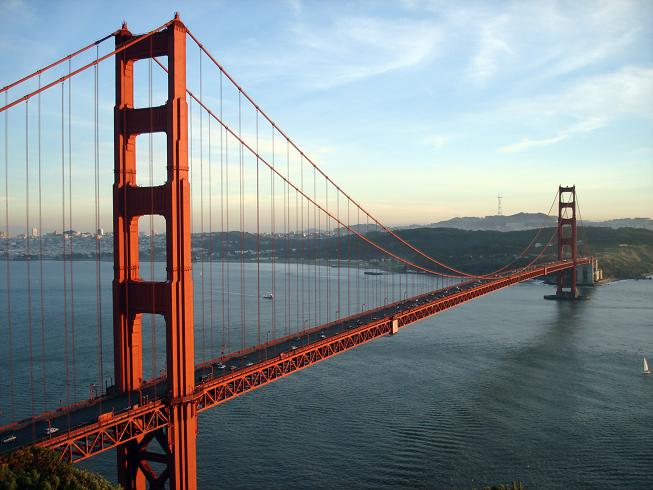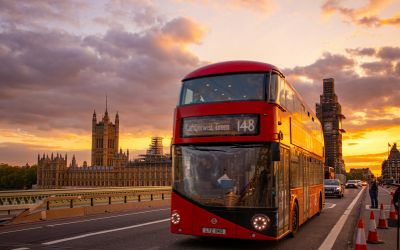Sustainable cities: vision to reality
With strong vision and commitment, it is possible to transform a city. Embracing sustainability can bring both economic expansion and political rewards. The stories of New York, Qingdao, Curitiba and Bangalore (pictured below) carry important lessons for urban leaders looking to create jobs while improving conditions for people and the environment.
_800_600_80.JPG)
In the late 20th century, Times Square in the heart of New York City was best known for its neon lights, traffic jams and seedy bars. Today, it has been transformed into one of the most innovative and people-friendly areas of any urban landscape.
In fact, over the past decade, New York City itself has become not only a centre for business and entertainment, but an iconic symbol of sustainable urban planning. In 2007, Mayor Michael Bloomberg, backed by a world-class team, launched PlaNYC to shift the model for the city’s growth. They sought to increase revenues while cutting pollution and increasing resilience to climate change.
The results have been impressive: New York has cut its carbon emissions by 16 per cent below 2005 levels, halfway to its 2030 target. They have increased the use of sustainable transport, including installing more than 300 miles of bicycle lanes and launching the largest cycle-share programme in the United States. Meanwhile, the city has lowered its air pollution and reduced traffic injuries and deaths. Life expectancy for New Yorkers has reached a record high.
The message from New York’s success is clear. With a strong vision and commitment to sustainability, it is possible to transform a city. Embracing sustainability can bring both economic expansion and political rewards. Further, these rewards can be achieved within a mayor’s political lifetime.
Solutions, not more problems
Already, half the world’s population lives in cities. An additional 75 million people will be added to urban areas each year. The bulk of this growth will be witnessed across Asia, Africa, and Latin America, which are home to many of the most rapidly emerging economies. The direction that cities take today will be a determining factor for sustainability for decades to come.
At their worst, cities can be a major drain on resources. Urban areas with large populations and voracious consumption patterns consume energy and water, and create waste. Cities produce nearly 70 per cent of global greenhouse gas emissions. In developing countries, cities bear up to 80 per cent of the costs associated with climate change. But, if they are designed right, a far different outcome emerges.

The evidence is overwhelming that this is possible. For more than a decade, the World Resources Institute (WRI) has been working on urban issues, especially around transport, to address the needs of the world’s urban populations. Through its EMBARQ programme – which has seven centres around the world – it has helped improve urban design, cut carbon pollution, decrease road fatalities, and save commuters time and money. WRI is also working to develop low-carbon economic growth models for cities. It is currently road testing a Greenhouse Gas Protocol to help urban communities measure and manage their emissions, and already more than 60 cities are already using it. Other projects include identifying and mapping water risks to ensure that people have access to clean, reliable water supplies.
The following sections describe some examples that offer clear, practical urban solutions drawn from WRI’s on-the-ground projects, and highlight key lessons in sustainable mobility.
Qingdao, China
Leadership is essential to create a common vision and enhance coordination. Nowhere is the urban transition more high-profile than in China. By 2030, 221 Chinese cities will have at least one million residents. Meanwhile, the country’s 12th Five Year Plan emphasises sustainable urban development. The country’s urban centres are looking to reconcile their rapid growth with national sustainability priorities.
To that end, WRI has been working with several cities in China to develop ‘sustainability blueprints’ – plans to create environmentally sustainable and liveable cities. This project, which was catalysed with support of the Caterpillar Foundation, aims to test approaches in several key pilot cities and scale them up to national and international levels..jpg)
The coastal city of Qingdao (pictured right), in eastern Shandong province, is one such city. WRI has helped to map a sustainability blueprint for the city of about 8.5 million people. The three-phase approach aims to: first, diagnose problem areas in land use and transport planning; second, develop feasibility studies and solutions that can be incorporated into the city’s transport policy agenda; and third, disseminate these lessons to other growing cities in China.
Although the national government highlights the importance of addressing both economic development and environment, few cities have concrete strategies and a truly coordinated approach to achieve this goal. WRI is working with Qingdaoto develop thefirst-ever strategic study for a comprehensive, integrated land use–transport plan. The recommendations of the study focus onretoolingexisting urban planning practicesandincorporatingthe broader land use system where transport activities are embedded.The study underscores the benefits of transit-oriented developmentat different geographical scales
Through our experience in Qingdao, it has become clear that coordinating between multiple agencies can be a challenge. Getting buy-in from local leadership is essential. One helpful approach has been to seek greater intervention from the city mayor who is, more often than not, best positioned to coordinate the various synergies for a project’s overall success. The mayor, for example, has been able to initiate a top-down planning mechanism to break down the silos among different government departments.
Curitiba, Brazil
Create success and others will follow. Curitiba, in the south of Brazil,is often cited as one of Latin America’s most liveable cities. Jaime Lerner, the former mayor of Curitiba and a WRI Board member, has argued that with the right leadership, vision, and communication with constituents, a city official can radically shift a city’s trajectory. He achieved such success in Curitiba.
.jpg) Mayor Lerner (pictured left) set a truly innovative vision for a green city. In the early 1970s, the city embraced a Master Plan that presented a strong vision and approach that would focus on people. The plan looked beyond transport, incorporating urban design, waste management, and other quality-of-life issues. The city has become well known for its integrated transport and land use development. For example, Curitiba implemented a low-cost, sophisticated system where buses travel on their own lanes, now known all round the world as bus rapid transit (BRT). Roughly 70 per cent of the city’s commuters now use the BRT to get to work.
Mayor Lerner (pictured left) set a truly innovative vision for a green city. In the early 1970s, the city embraced a Master Plan that presented a strong vision and approach that would focus on people. The plan looked beyond transport, incorporating urban design, waste management, and other quality-of-life issues. The city has become well known for its integrated transport and land use development. For example, Curitiba implemented a low-cost, sophisticated system where buses travel on their own lanes, now known all round the world as bus rapid transit (BRT). Roughly 70 per cent of the city’s commuters now use the BRT to get to work.
The city’s success has encouraged a more positive approach to sustainable urban planning throughout Latin America. The BRT model initially implemented in Curitiba is now being used in 56 cities in Latin America –a third of the cities in the world with bus corridors.
Other cities have built on Curitiba’s success with advanced traffic management and the use of new information systems. New technologies are also improving the operational and environmental performance of bus systems.
The development of BRT has also helped attract additional investments in sustainable transport systems throughout Latin America. Countries such as Brazil, Mexico and Colombia have implemented national programmes to provide needed finance and technical capacity for transport. The EMBARQ centre in Mexico has been instrumental in the implementation of PROTRAM, a funding programme for mass transit, which is supporting 34 Mexican cities.
Bangalore, India
Collaboration at multiple levels leads to consensus. Bangalore is the third-largest city in India, home to about 8.75 million people. While often cited as a positive example of modern development, the city has been struggling recently under the weight of its growth. Rapid motorisation has created increased congestion, longer commute times, and poor air quality in Bangalore and many other Indian cities.
WRI’s experts have been working closely with officials at the Bangalore Metropolitan Transport Corporation (BMTC) – the city’s sole provider of bus-based transport services – to improve transport systems and urban design. As one of the largest public transport operators in India, BMTC’s fleet of 6,500 buses carries around 5 million passenger trips daily, accounting for 42 per cent of all motorised trips in the city.
Our team in India has been helping develop a city-wide, high-frequency connective grid of bus services
Our team in India has been helping develop a city-wide, high-frequency connective grid of bus services – the Bangalore Intra-City Grid (BIG) Bus Network – providing research and technical support throughout the process. The BIG Bus Network is expected to improve the quality of city bus services in Bangalore, and will be supplemented by additional infrastructure upgrades, including new transfer facilities, integrated fares, simplified route numbers, better passenger information systems and unified branding.
Challenges emerged, however, largely because the BMTC senior management has experienced frequent changes within its ranks. Several previous initiatives to improve city bus services had fallen into disarray, partly due to this inconsistent leadership. For our recommendations to take hold, the vision has to be supported and executed – regardless of changes at the top.
In response, EMBARQ India’s experts started working with BMTC staff at all levels. Our team conducted multiple workshops with BMTC staff, practiced collaborative data collection and planning exercises, and established mechanisms for continuous feedback across the organisation. EMBARQ experts helped train BMTC staff in data collection and performance monitoring, oversaw travel demand assessments and surveys, provided technical support for route and service planning, and collaborated on communications strategies.
On 16 September 2013, BMTC launched the BIG Bus Network with an initial 62 buses on Hosur road. Thepilot corridorhas already improved transport services for its 53,000 daily passengers, shaving commuters’ average wait times by 56 per cent.
A second major reform will be the creation of suburban ‘feeder’ routes, connecting peripheral destinations to the BIG Bus Network. When fully rolled out across the city, the BIG Bus Network will positively impact an estimated 2.5 million passengers by 2016. The network’s early success is already making an impact on other cities, with Ahmedabad, Chennai and Mumbai planning to follow Bangalore’s example.
Bringing sustainable cities to life
Cities are living organisms, as Professor Geoffrey West has said. Leaders must respond accordingly. If done right, the rewards – for leaders and their constituents – are great. Looking beyond the big picture, implementing the nuts and bolts is critical for success.
Going back to New York, strong leadership and a clear vision are absolutely critical. From Qingdao, we find that consolidation among agencies is essential. From Curitiba, we learn how a powerful model can scale up sustainable strategies elsewhere. And from Bangalore, we find that collaboration at various levels can bring consensus for reform. Across all of these examples, it is clear that sustainability cannot be merely a short-term idea. It takes time and commitment to see real change.
At a time when progress at the international level is moving too slowly, there is considerable hope in cities. Strong and determined city leaders can respond to constituent needs quickly and take meaningful actions. Their success can help improve the lives of millions of people – and create momentum for sustainable growth around the world.








